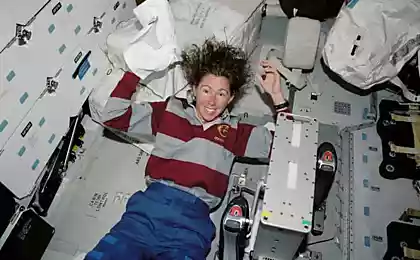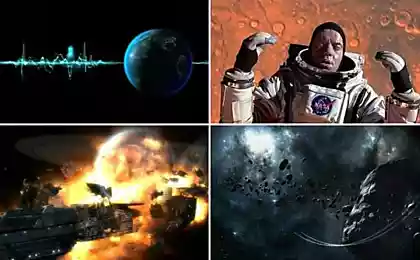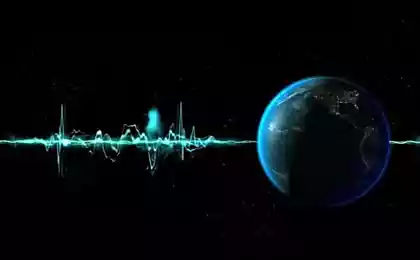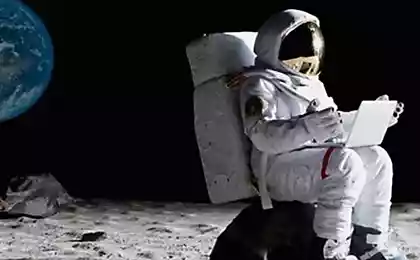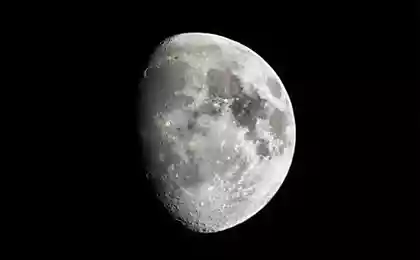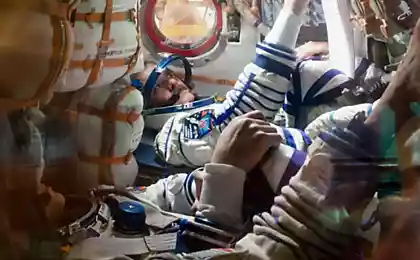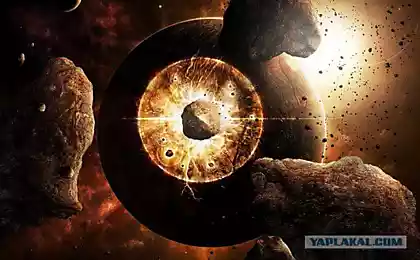2015 was very rich in cosmic events! We learn more and more about Pluto and Mars, search and find planets similar to Earth, a planet covered with water or ice, and perform other amazing otkrytiya.Sayt chose nine most impressive facts about space, which became known this year.
1. Pluto is the "heart» h2> 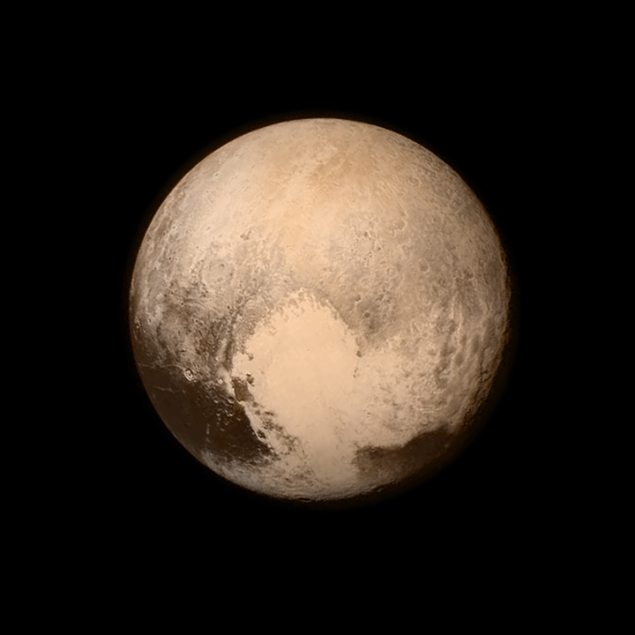
In July, the automatic interplanetary station (AWS) New Horizons has completed its voyage nearly a decade to Pluto, showing us his hand with unprecedented. We learned that Pluto is actually red and it has a giant ice "heart", consisting of carbon monoxide. What is the coolest - expedition gave us a beautiful picture of the distant dwarf planet.
2. Discovered "big brother" of the Earth - Kepler-452b h2> 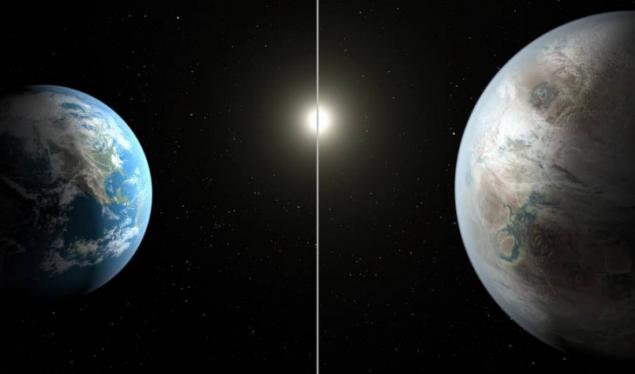
Also in July, NASA announced that the space telescope "Kepler" found the planet, dubbed Kepler-452b, at a distance of 1400 light years from Earth. It is 60% more of our planet by diameter and located in the habitable zone of a star similar to the sun. According to scientists from NASA, just in our galaxy could be even a billion such planets - and Telescope "Kepler" will find them.
3. Astronauts tried the food grown in space h2> 
In early August, the astronauts on board the International Space Station for the first time tried to grown in the same leaves of red lettuce. System The Veggie, developed by ORBITEC, allowed the ISS to arrange the first "garden". In the future, this system, which does not require the maintenance of a large number of resources can help provide power first colonists on Mars.
But this achievement is not only important for astronauts. This method of cultivation products can be used in the world - where there is fertile soil and other conditions for traditional farming.
4. We were shown a new image beautiful nebula h2> 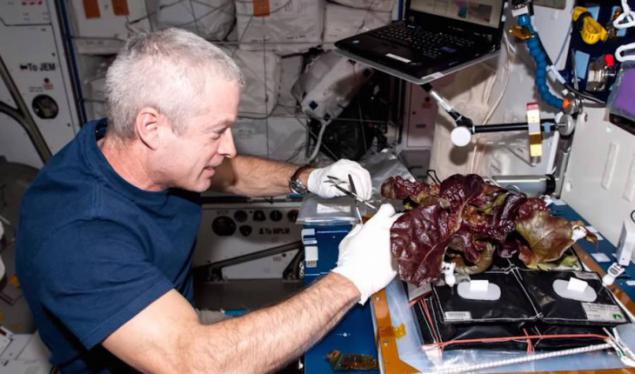
This year, the space telescope "Hubble", a joint project of NASA and the European Space Agency, has demonstrated a new picture of the Lagoon Nebula - delightful glowing clouds of hot gas in the constellation of Sagittarius. Despite this peaceful name, in fact, we're looking at a strong stellar wind flows, swirling hot gas and the active star formation - all of the "veil" of black cosmic dust.
5. Astronomers have discovered the closest to the Earth exoplanet h2> 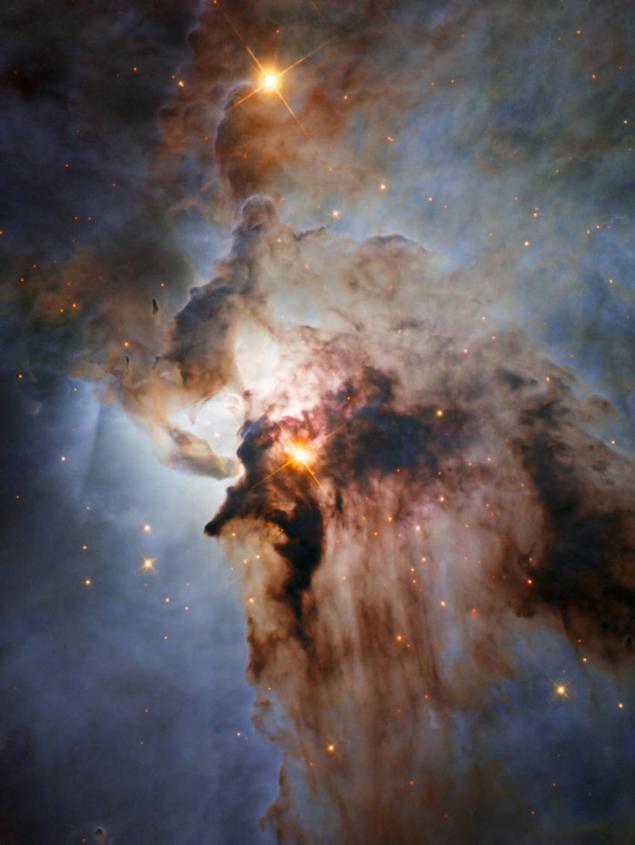
The space telescope "Spitzer" NASA scientists have discovered the closest to us exoplanet, called HD 219134b. It is located 21 light-years from Earth, and although we have to admit that physically reach it in any reasonable period of time is simply impossible (one light year is 9 460 730 472 580 800 meters), it offers a unique opportunity to study the distant past our own planet. The only other planets that are so "close» - GJ674b - to do with Earth almost nothing in common.
"Now we have a beautiful object for the study of the smallest details, - says Michael Gillon, a member of the University of Liege and a leading scientist who uses the transit method to detect extrasolar planets telescope" Spitzer ". - It's a real Rosetta Stone in the field of super-Earths ».
6. NASA released the new "epic" image of the Earth h2> 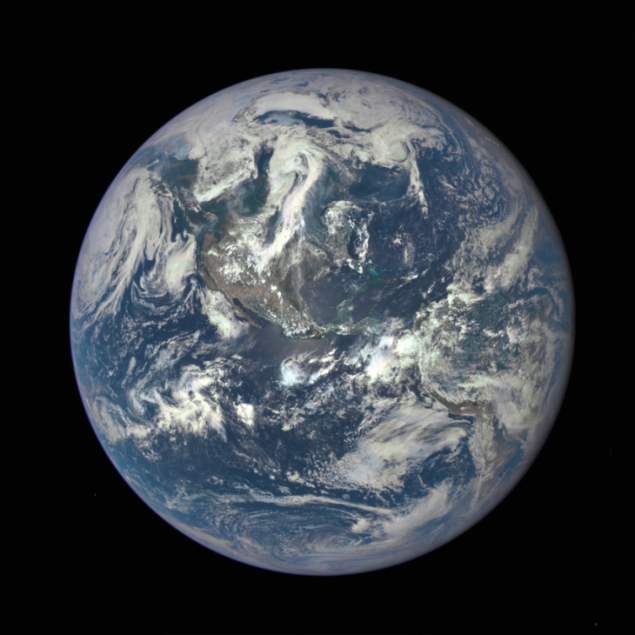
Last month, the satellite DSCOVR showed what it is capable of a special polychromatic camera, wearing a loud name EPIC (Earth Polychromatic Imaging Camera). From a distance of more than half a million kilometers, she made this wonderful picture here.
The official purpose of the camera - to capture images of the Earth from different angles, which will later be used to study how the sunlight passes through the atmosphere. But it is obvious that the results of the EPIC interest not only to scientists: we all have the opportunity to enjoy our little blue planet.
7. With the help of the satellite were seen serious climate change h2> 
JPL - Research Center NASA, engaged in the creation and maintenance of unmanned spacecraft - found that the remainder of the ice shelf Larsen B, which, according to the researcher Ali Hazendara existed for more than 10 000 years, can vanish within a decade. If this happens, fragments of ice will be in the open ocean, melted, will lead to a significant increase in the water level.
8. The spacecraft captured the mysterious lights in Ceres h2> 
The most curious and almost sci-fi opening of this year - two spots of light on the surface of Ceres, a dwarf planet located between Mars and Jupiter. AMC's "Breaking Dawn" to fix them at a distance of more than 45 thousand kilometers away - too far to pinpoint their origin. It is only known that the required facilities are located in the crater of a three-meter depth and reflect much more sunlight than anything around. Current hypotheses include a version of ice volcanoes or salt areas.
Fortunately, the mission of "Breaking Dawn" - to explore Ceres is on its own orbit, so we are waiting for more detailed pictures that will give scientists a clear picture of what is happening on the planet.
9. We saw new pictures "Pillars of Creation" in the Eagle Nebula h2> 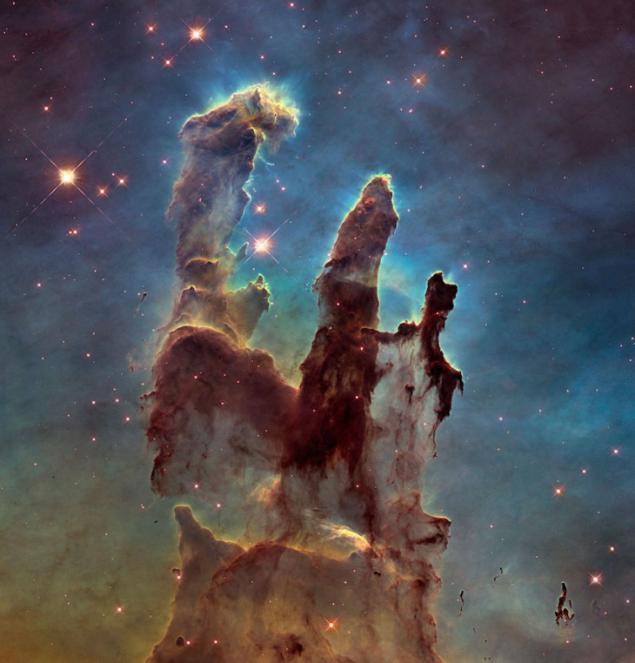
The first pictures of these giant "pillars" of the interstellar gas and dust were made in 1995. Over the past 20 years, the telescope "Hubble" has continued its work, taking pictures in different ranges - from infrared to visible light - and in the end we got a picture of breathtaking.
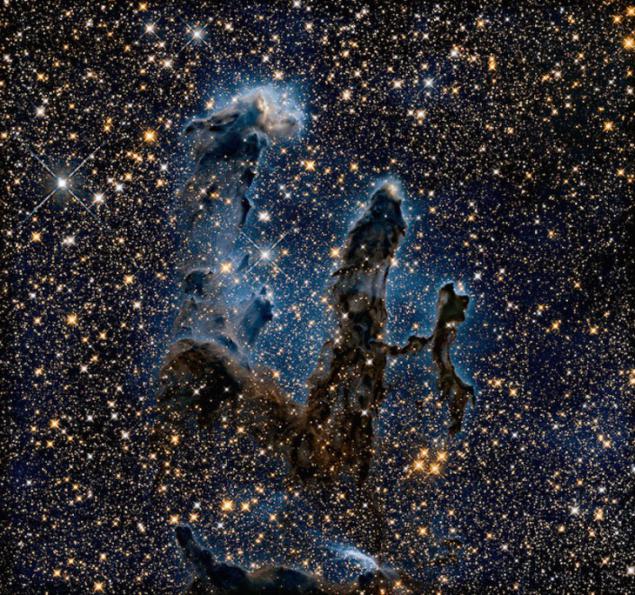
There is evidence that the "Pillars of Creation" were destroyed by the explosion of a supernova about 6 000 years ago, but due to the fact that the nebula is located at a distance of 7000 light years from us, we will be able to watch this stunning astronomical object for at least one thousand years.
In the near future we are waiting for more interesting things. The following year the AMC "Juno" close to the orbit of Jupiter, will launch a research unit InSight, which will help us to investigate the internal structure and composition of Mars, as well as the start of the mission OSIRIS-REx, which aims - to deliver soil samples from the asteroid Bennu, which can be the first step to asteroid mining.
via macradar.ru/stories/9-udivitelnyh-faktov-o-kosmose-nasa/













